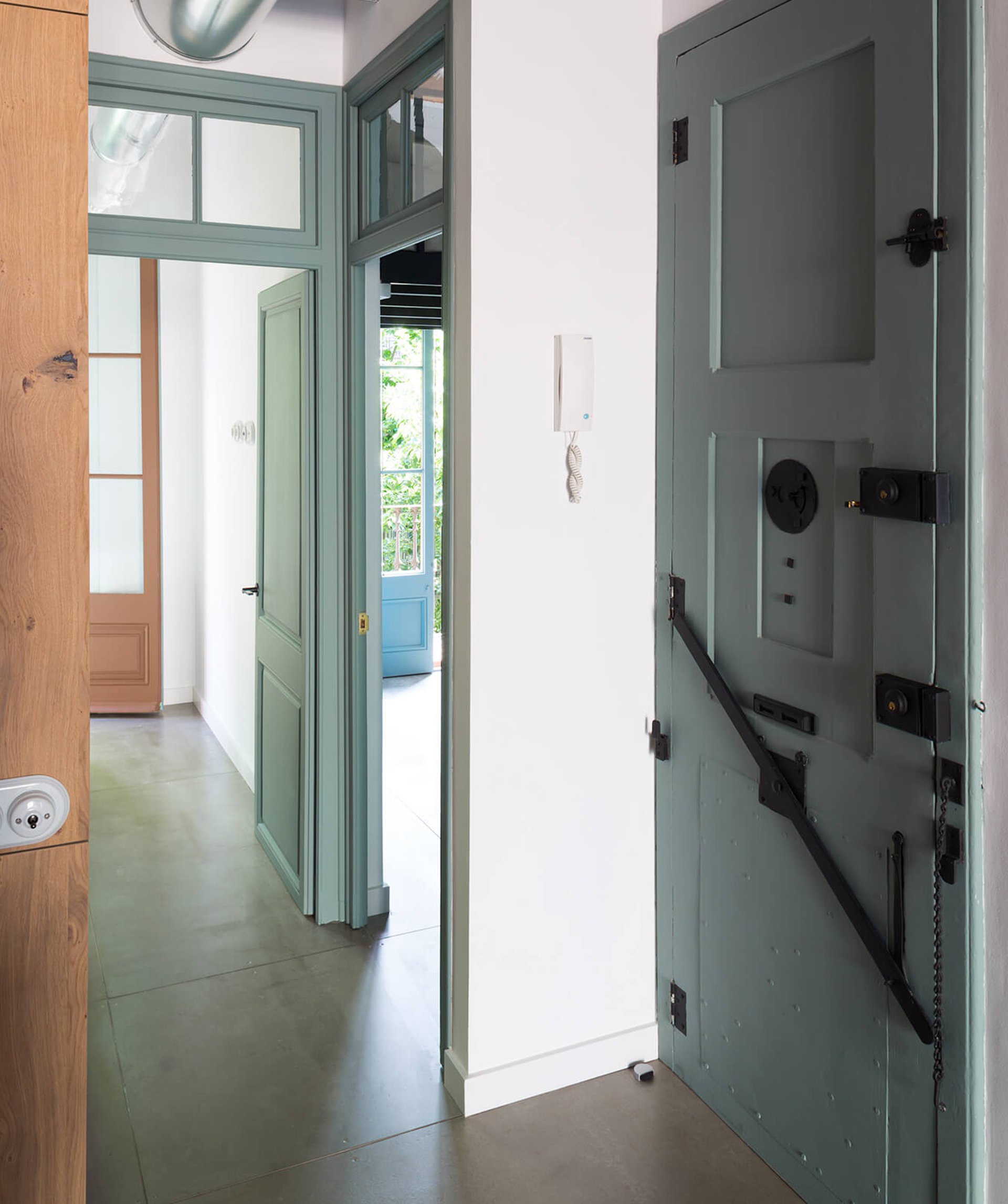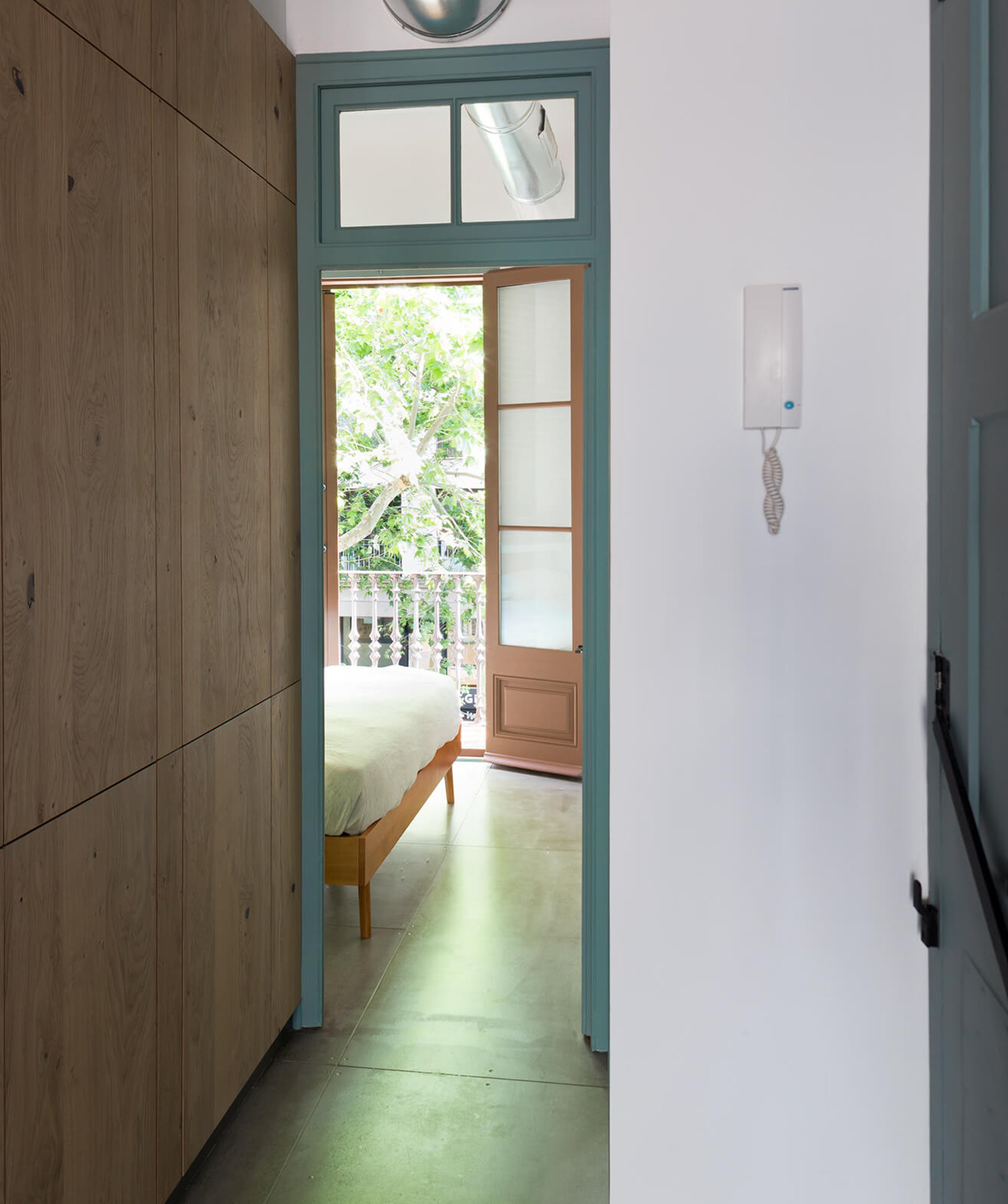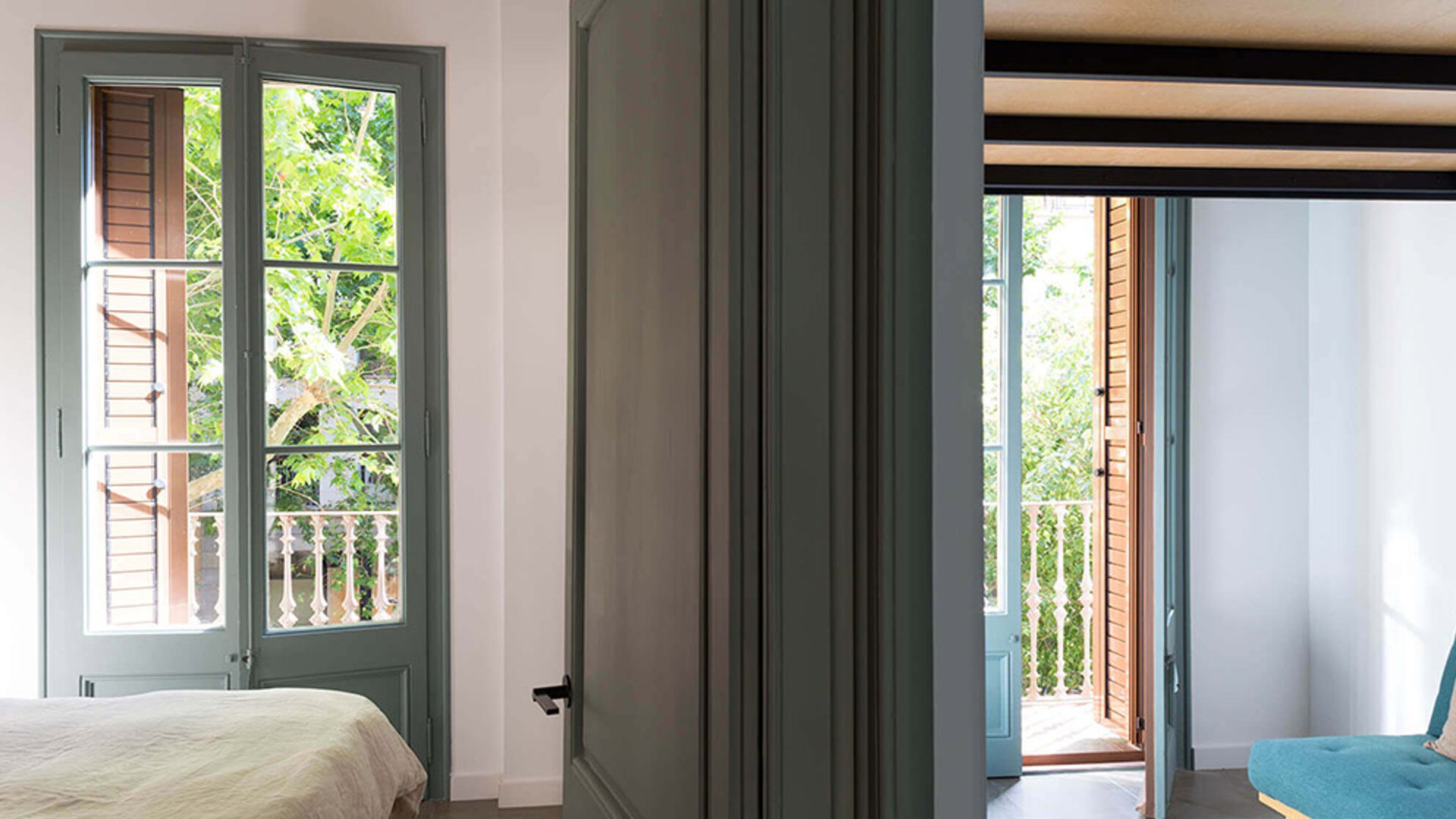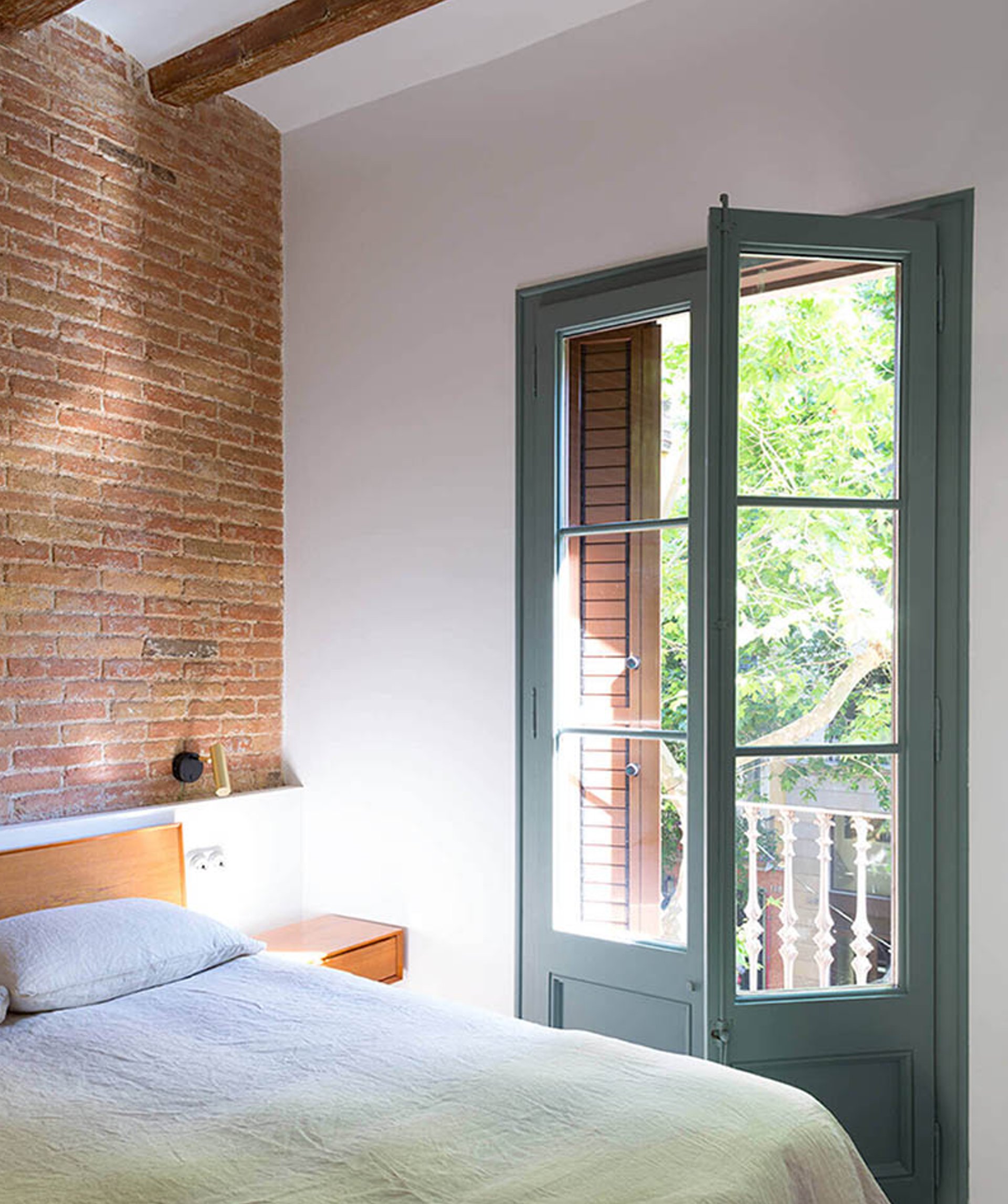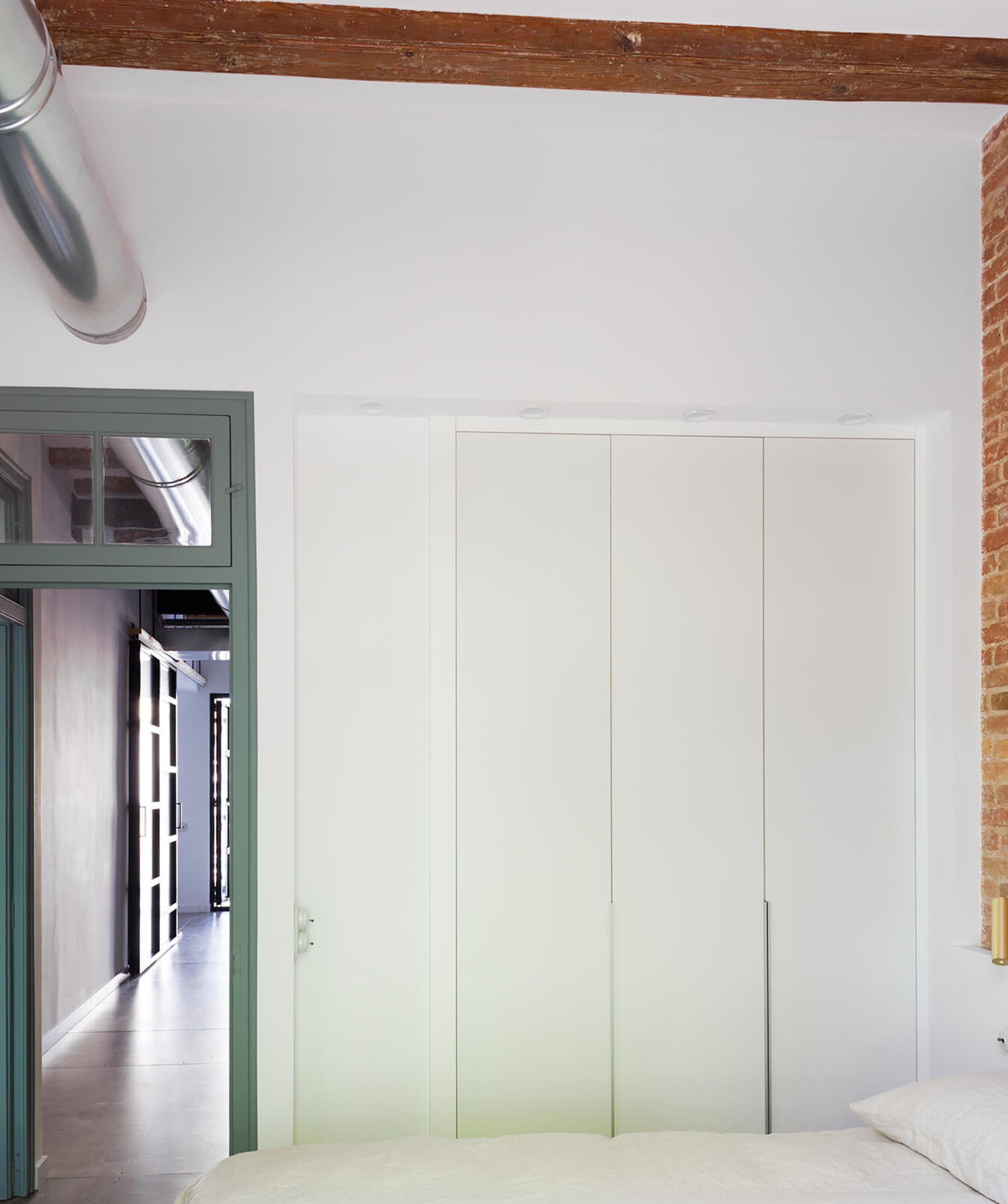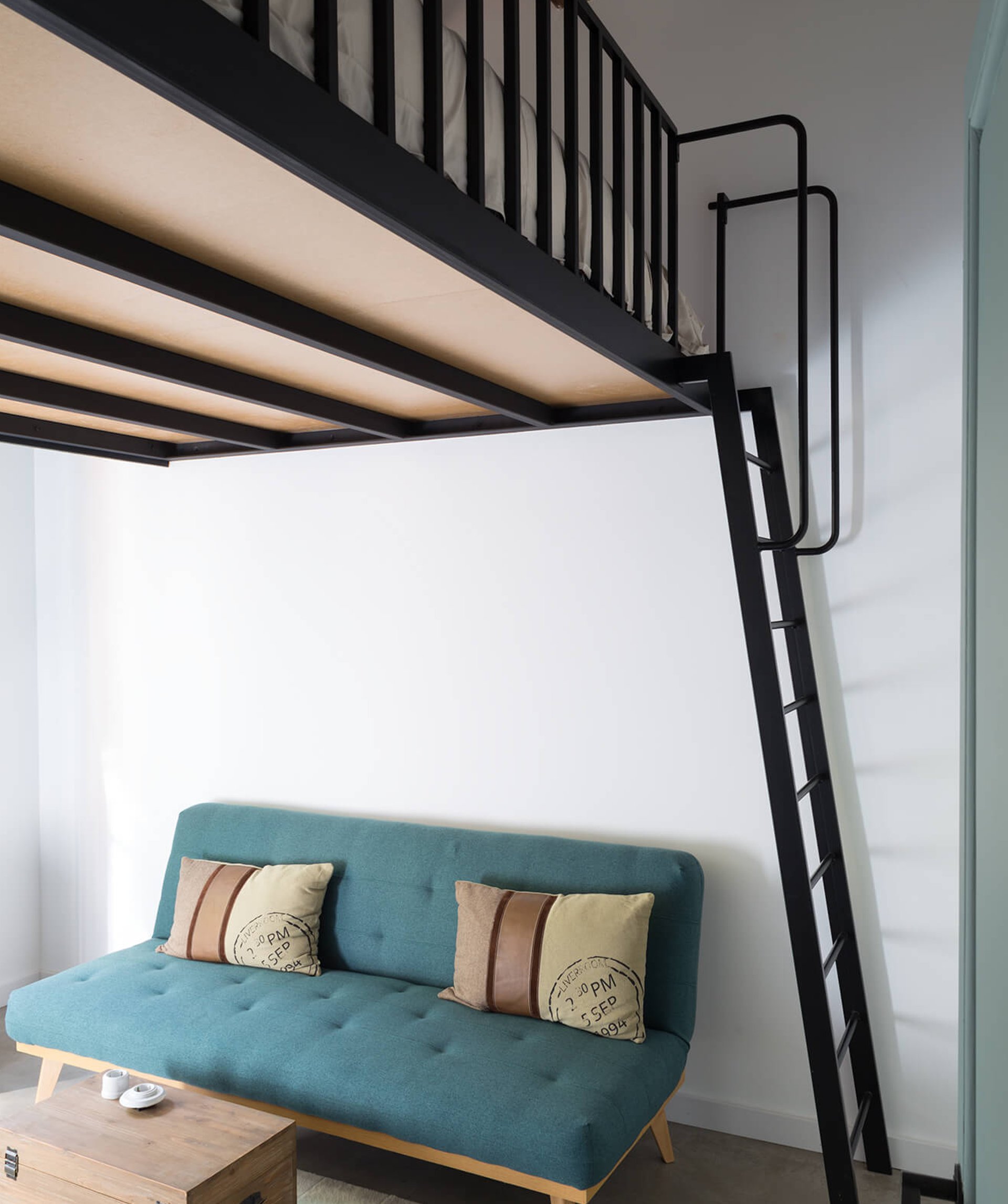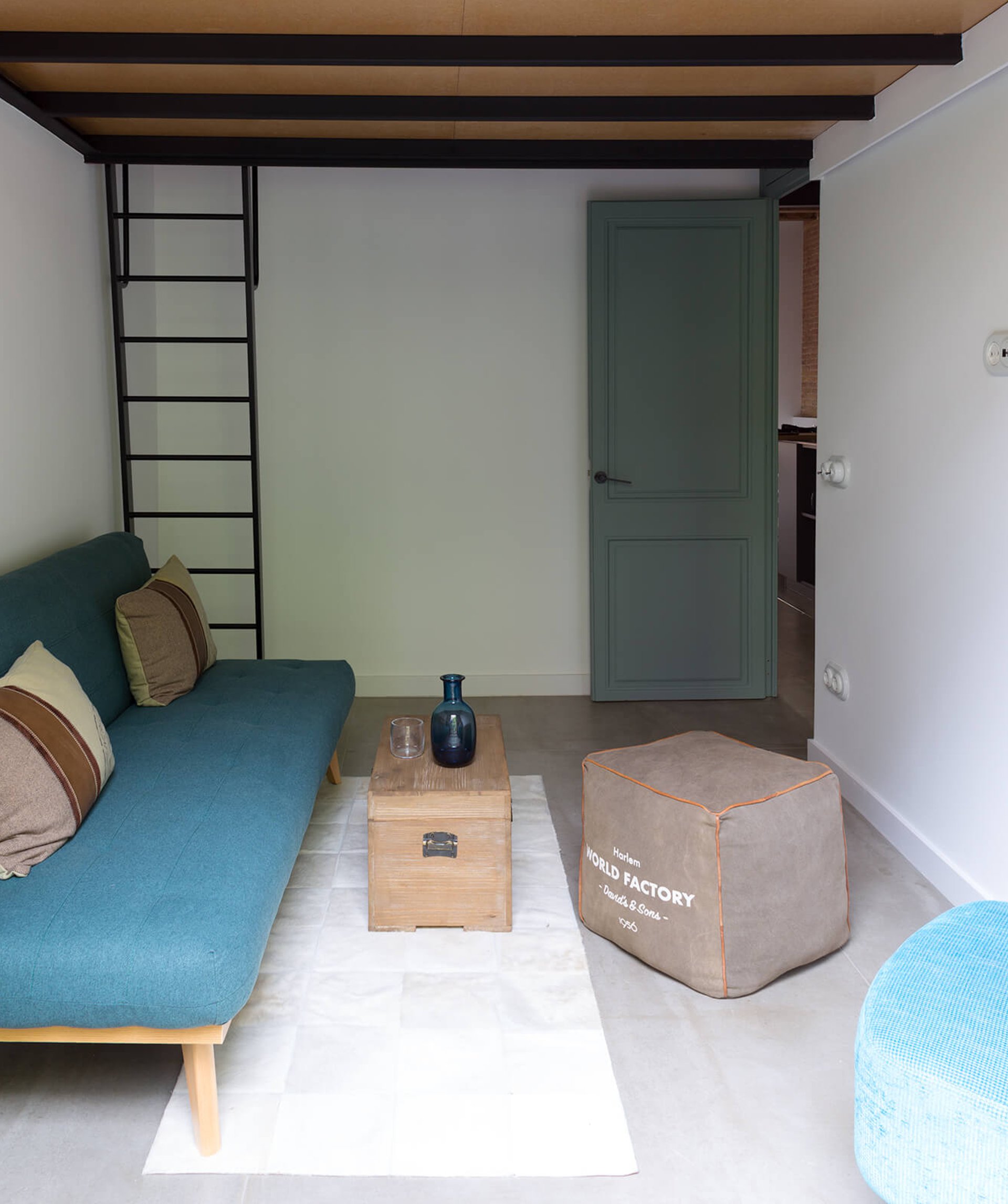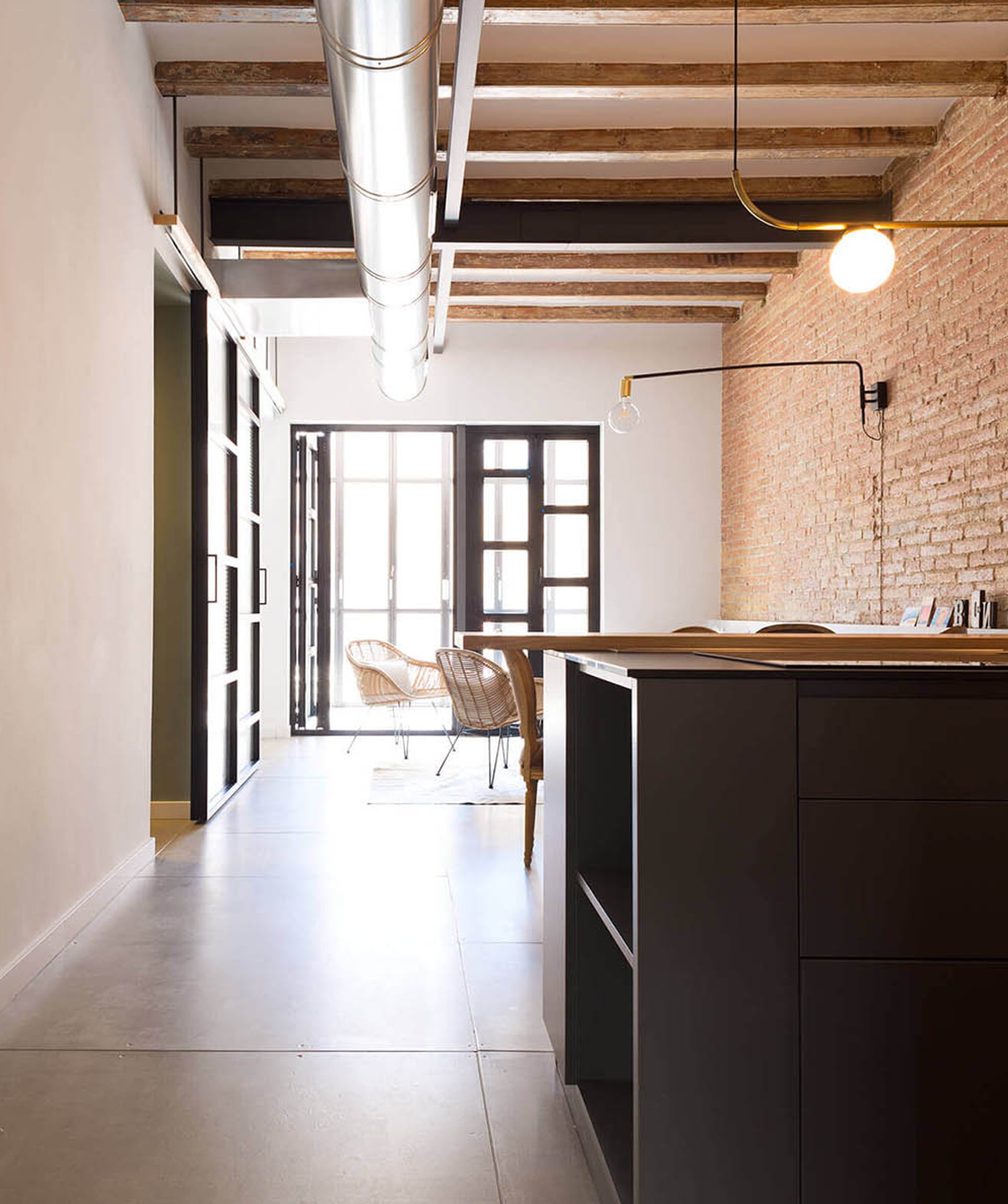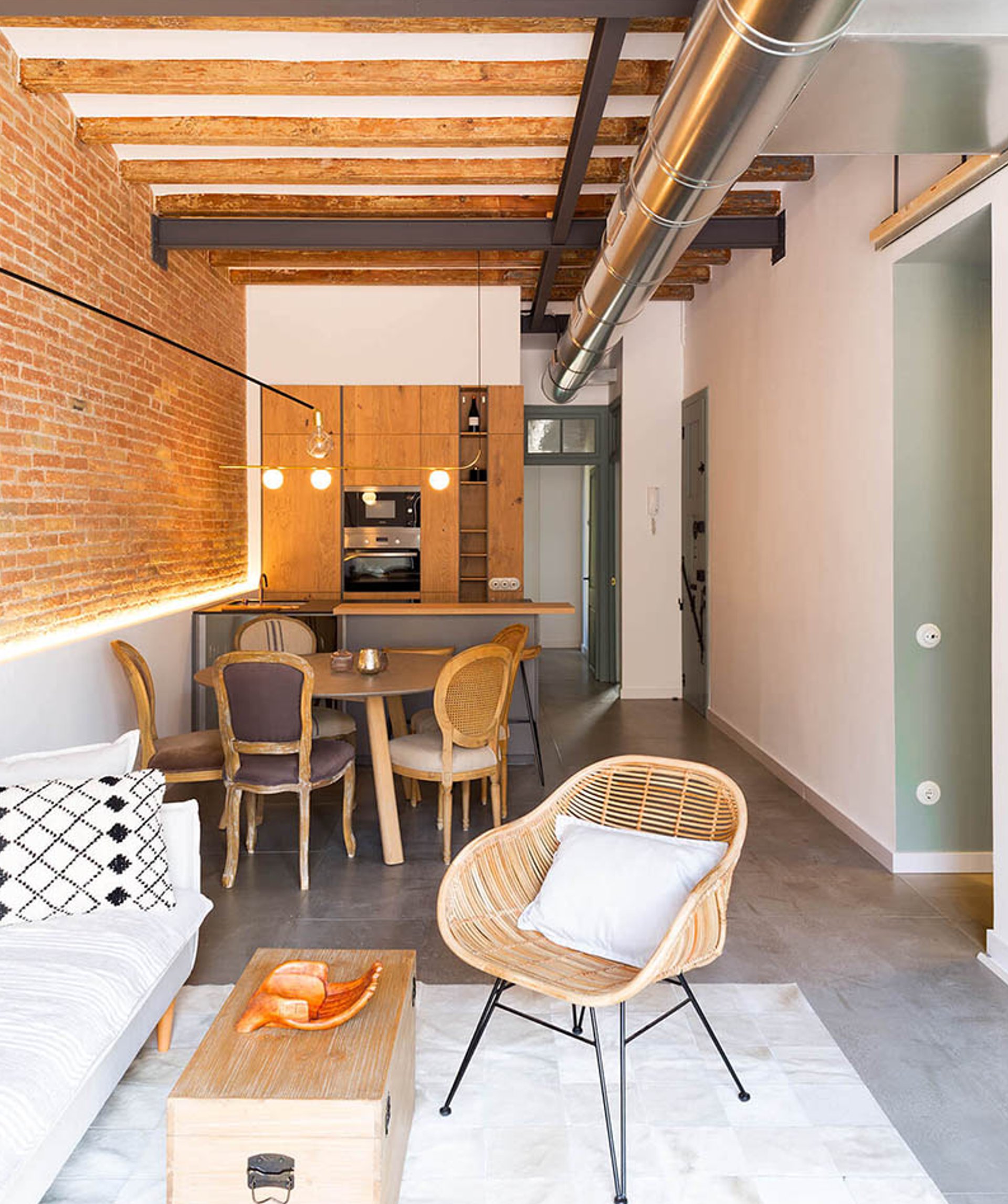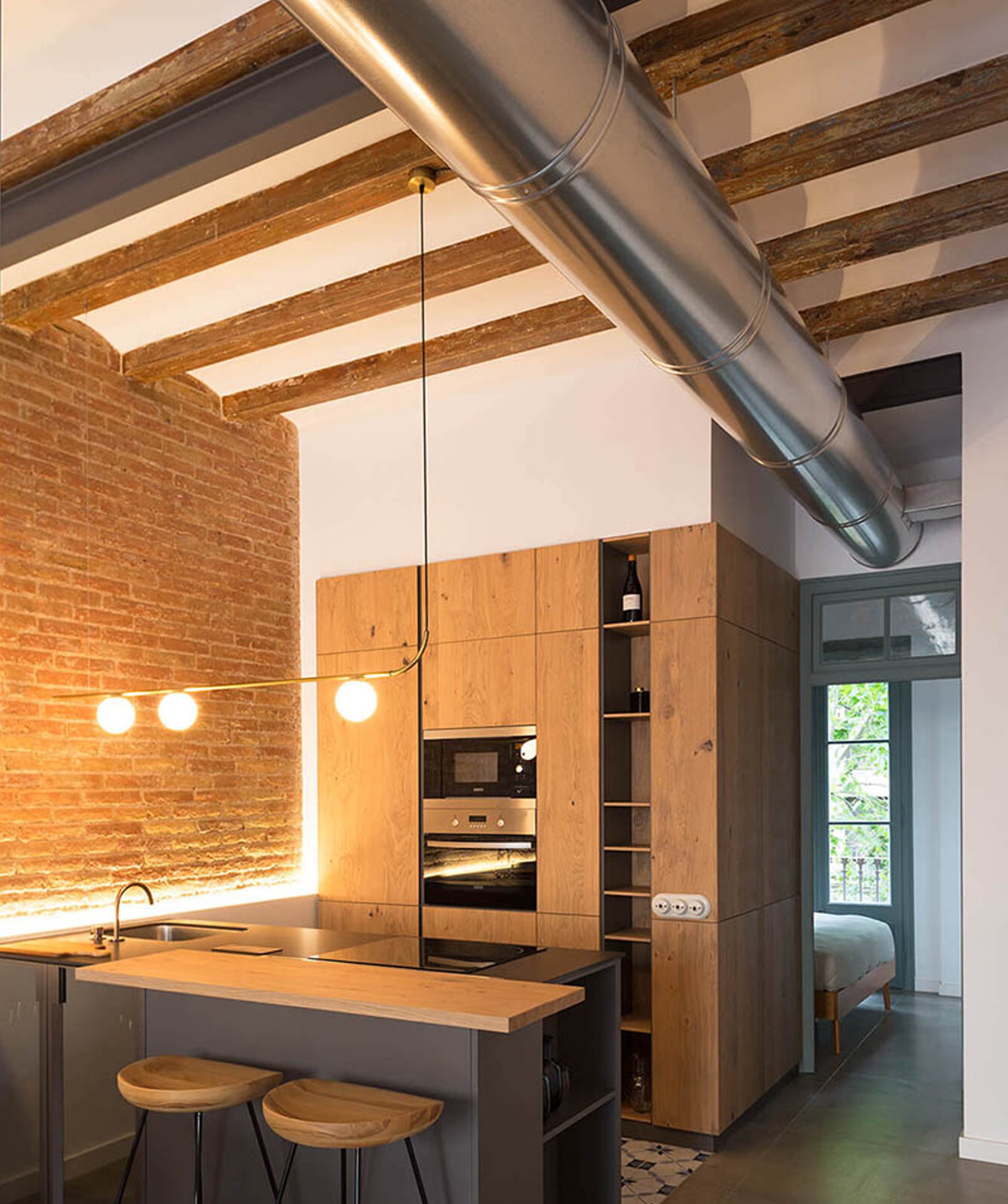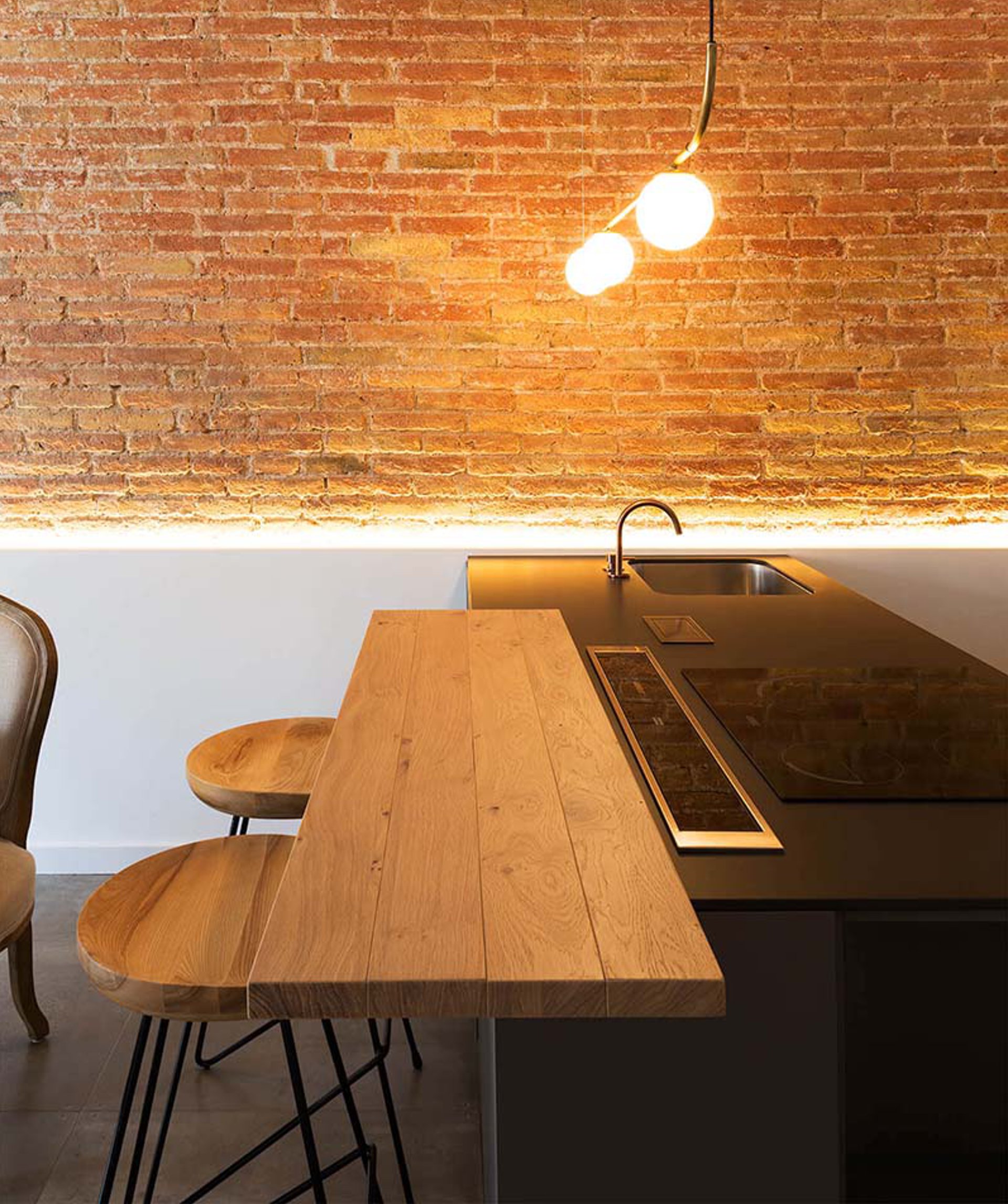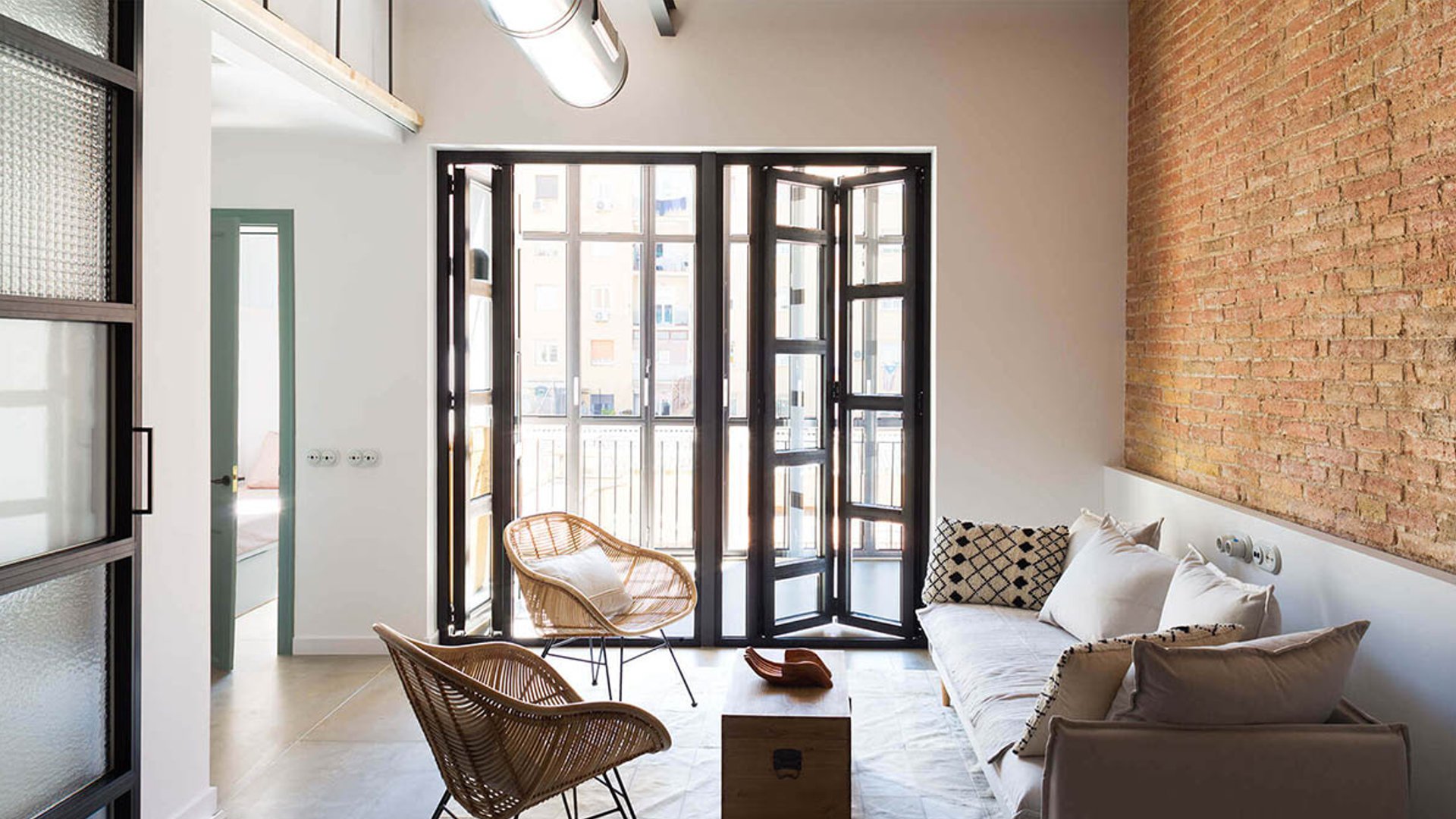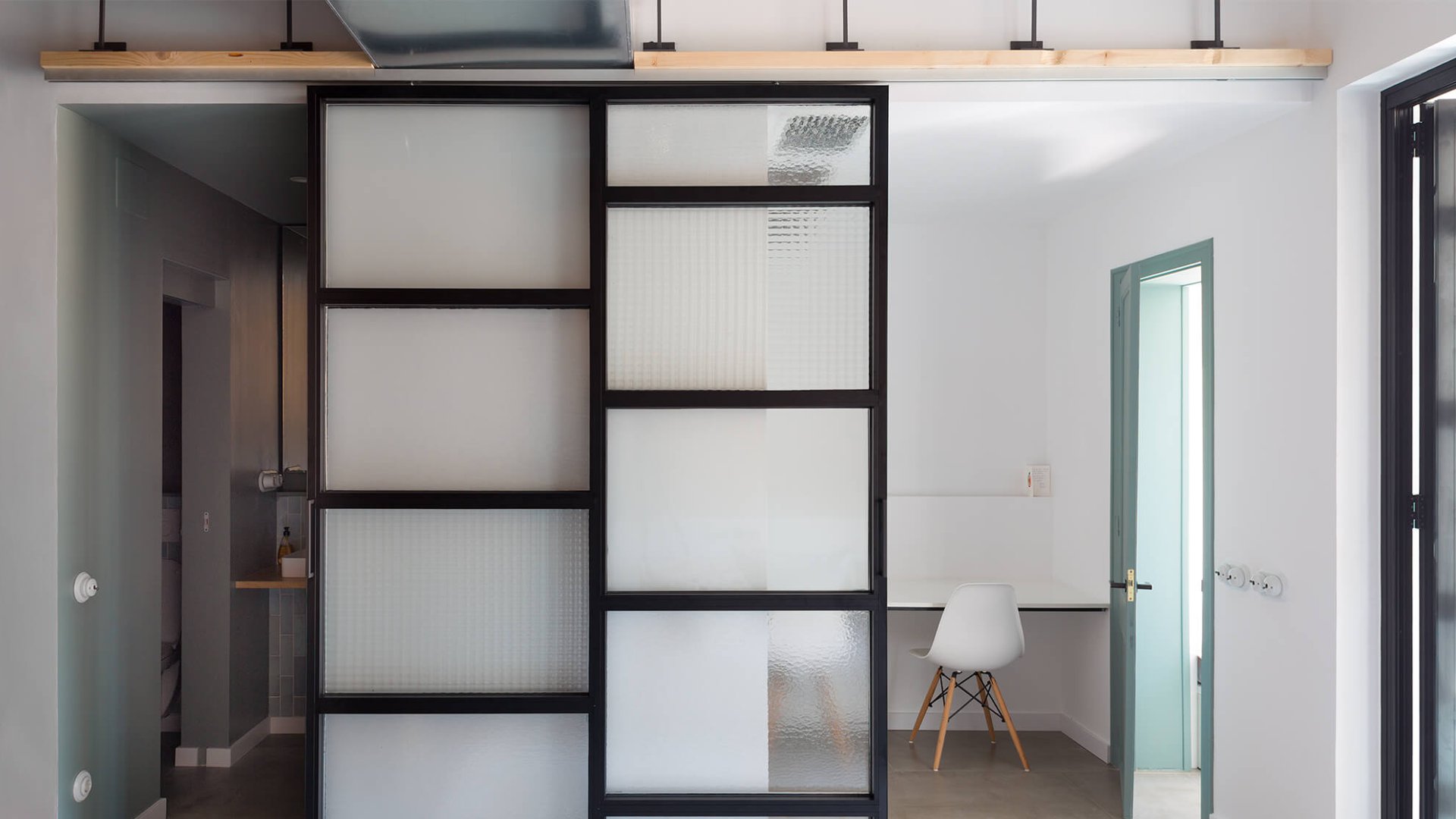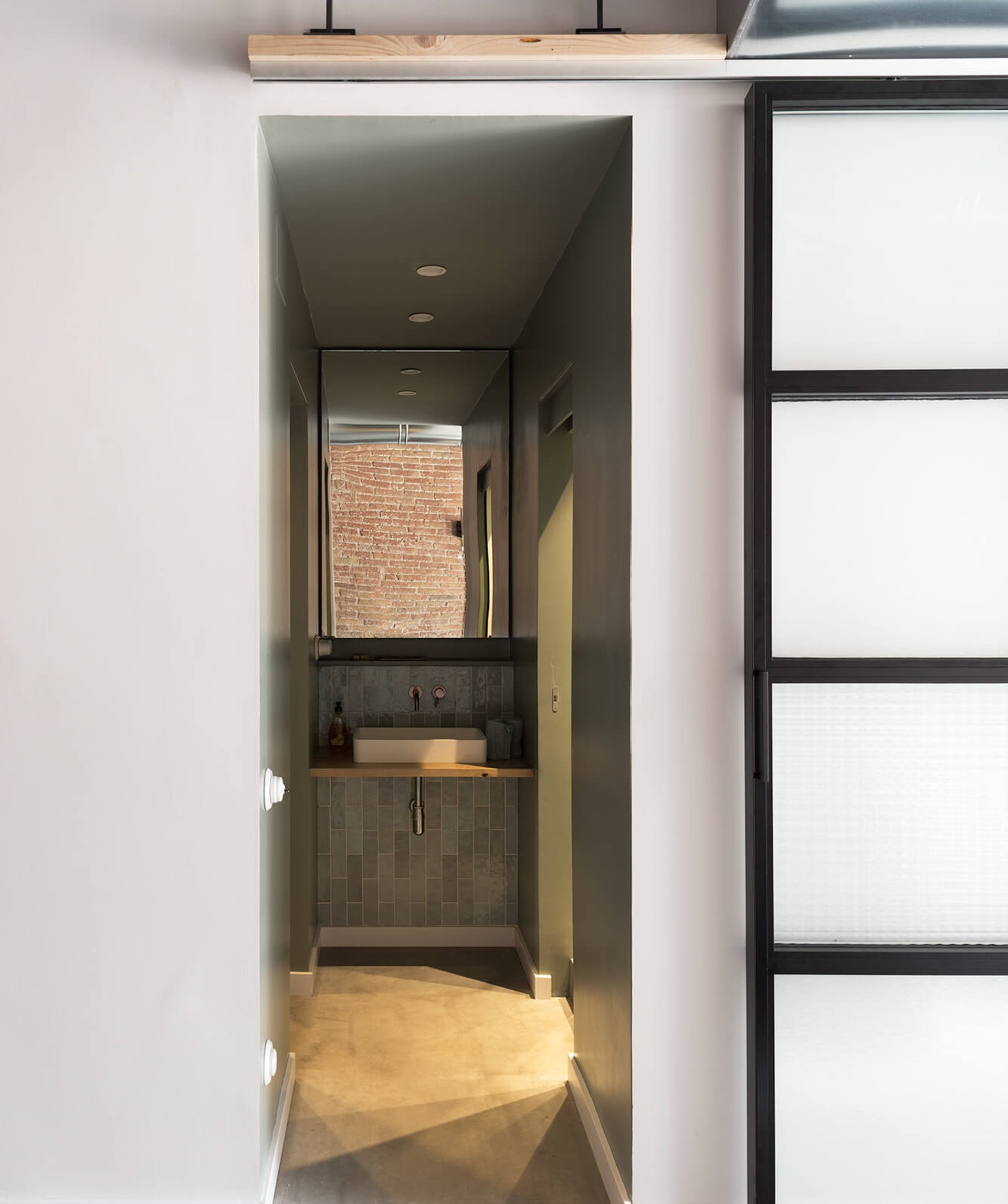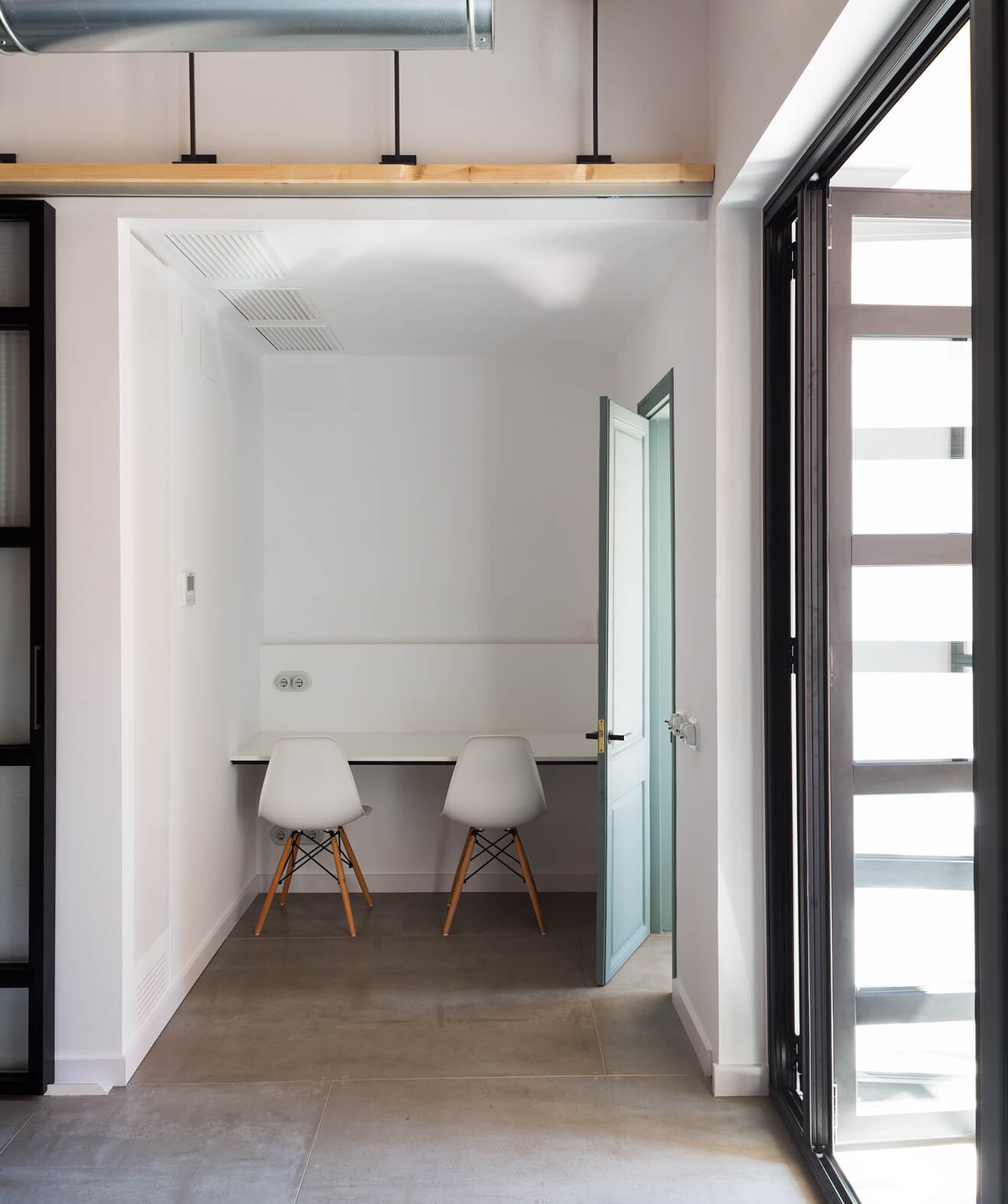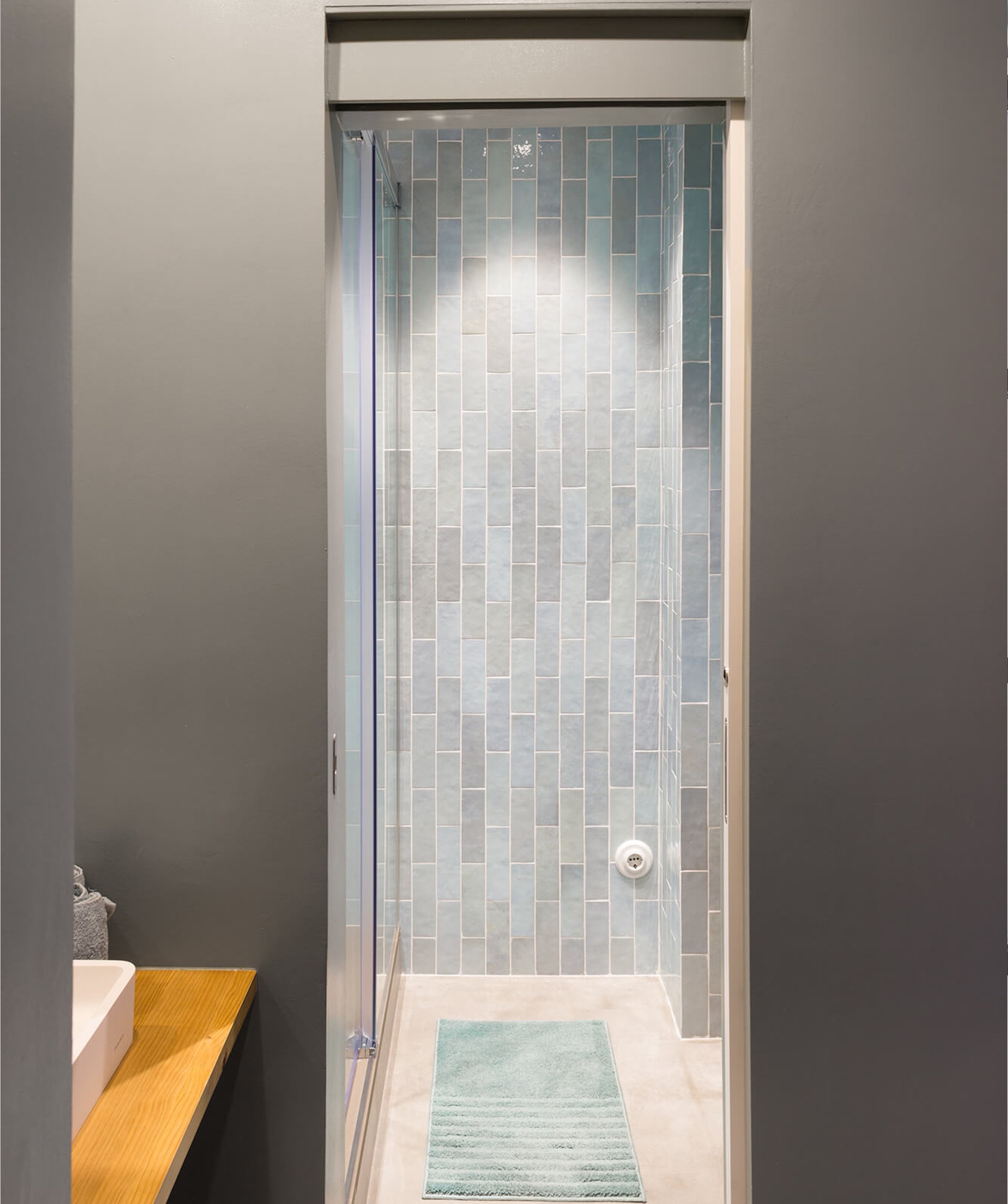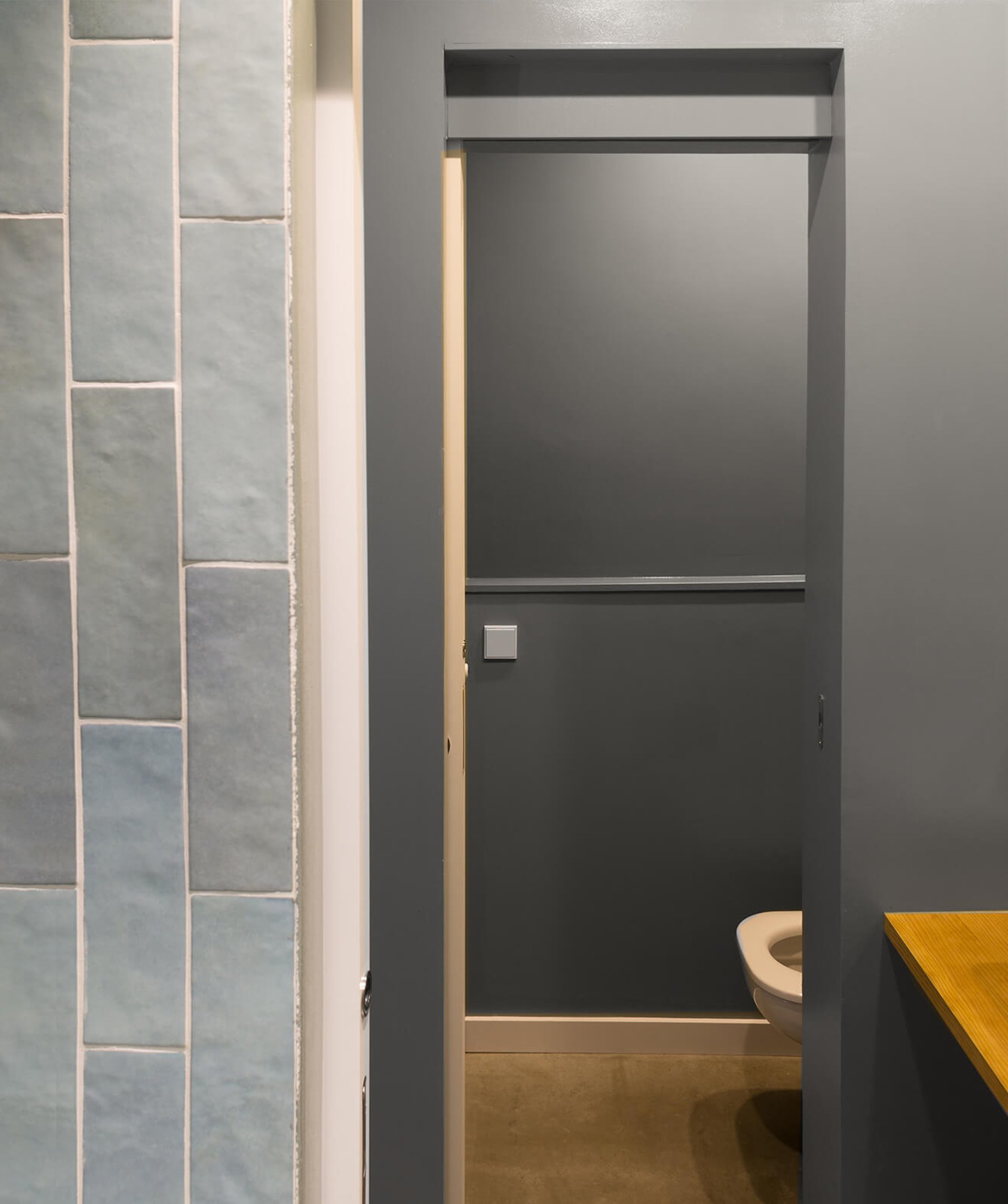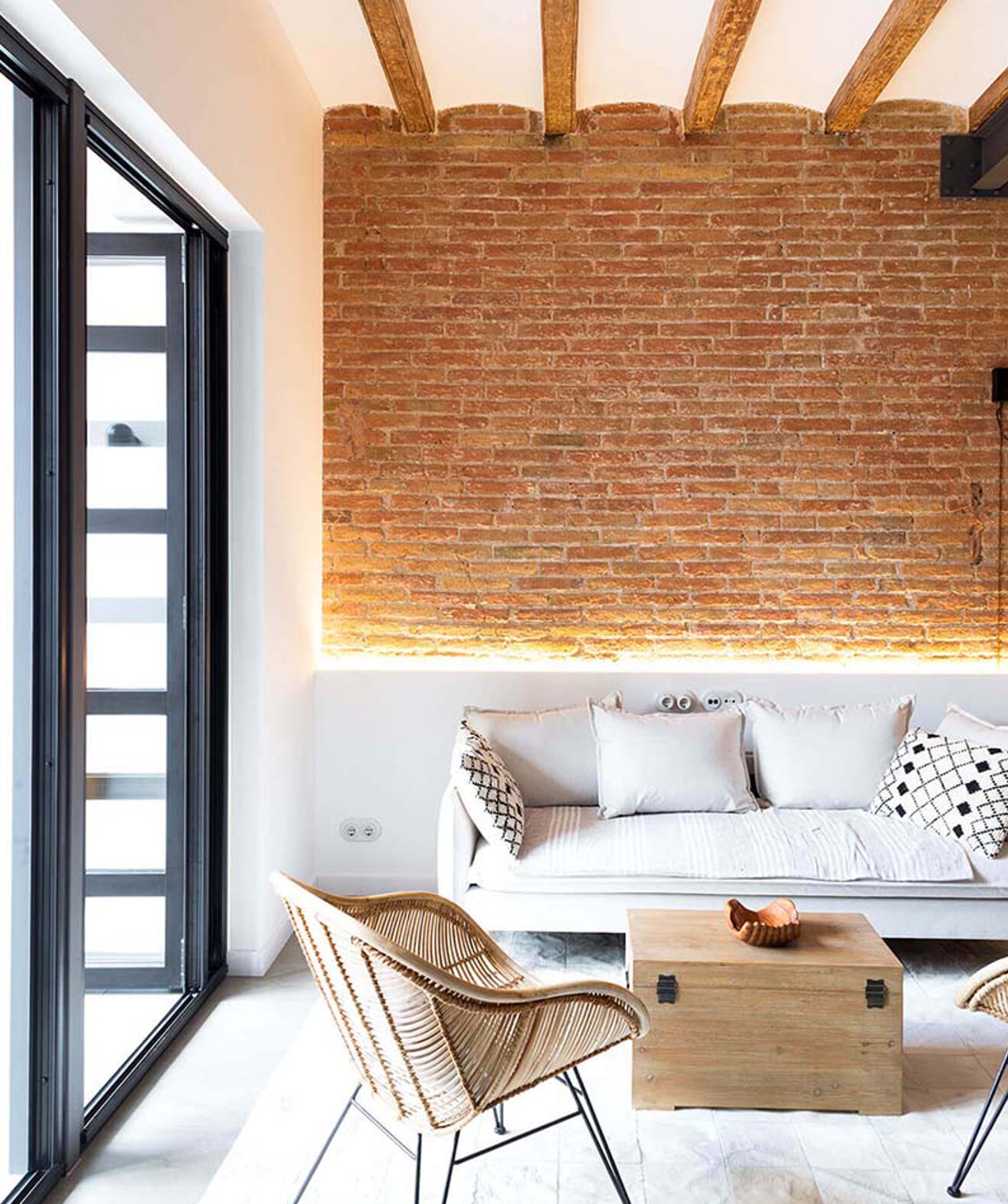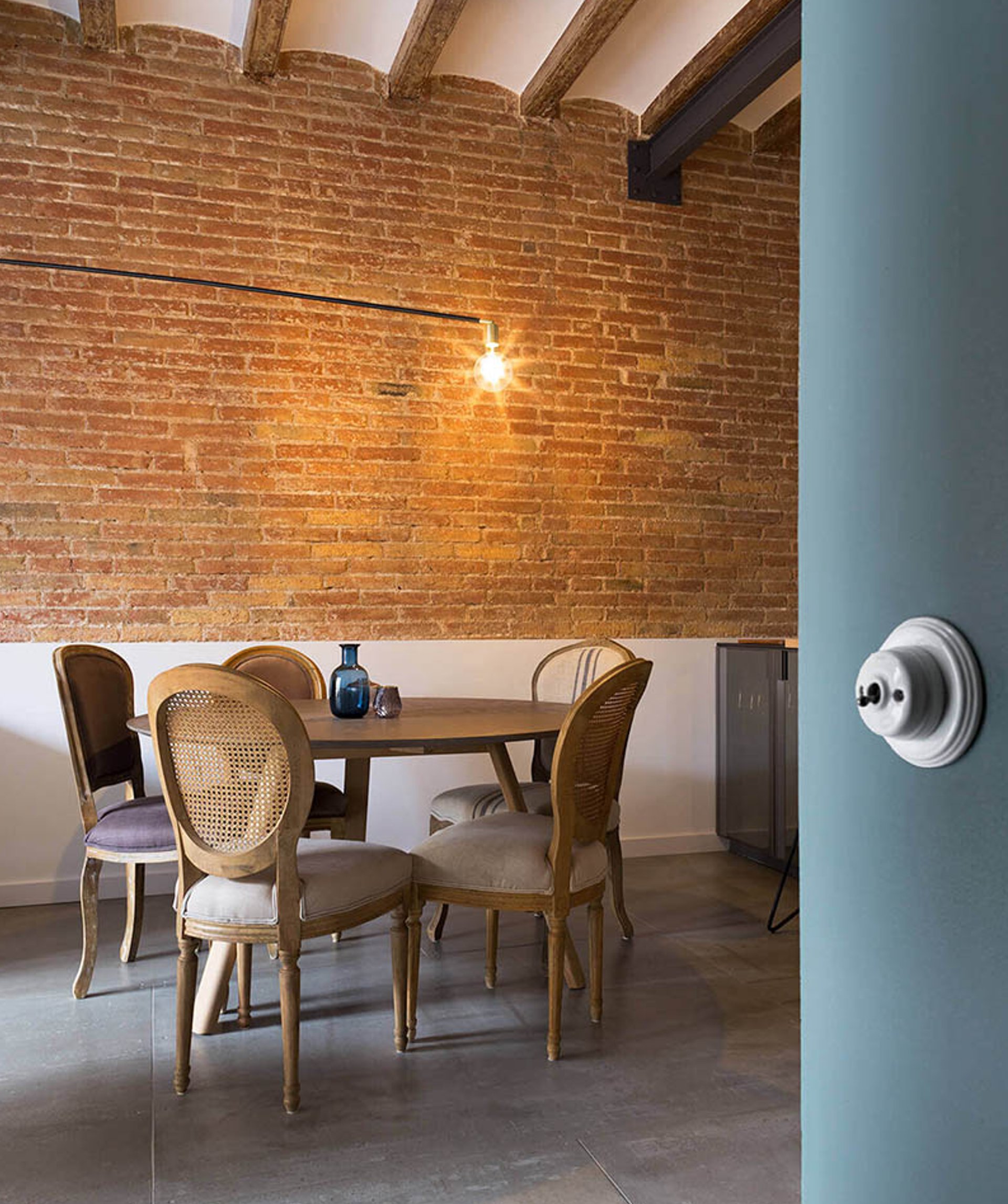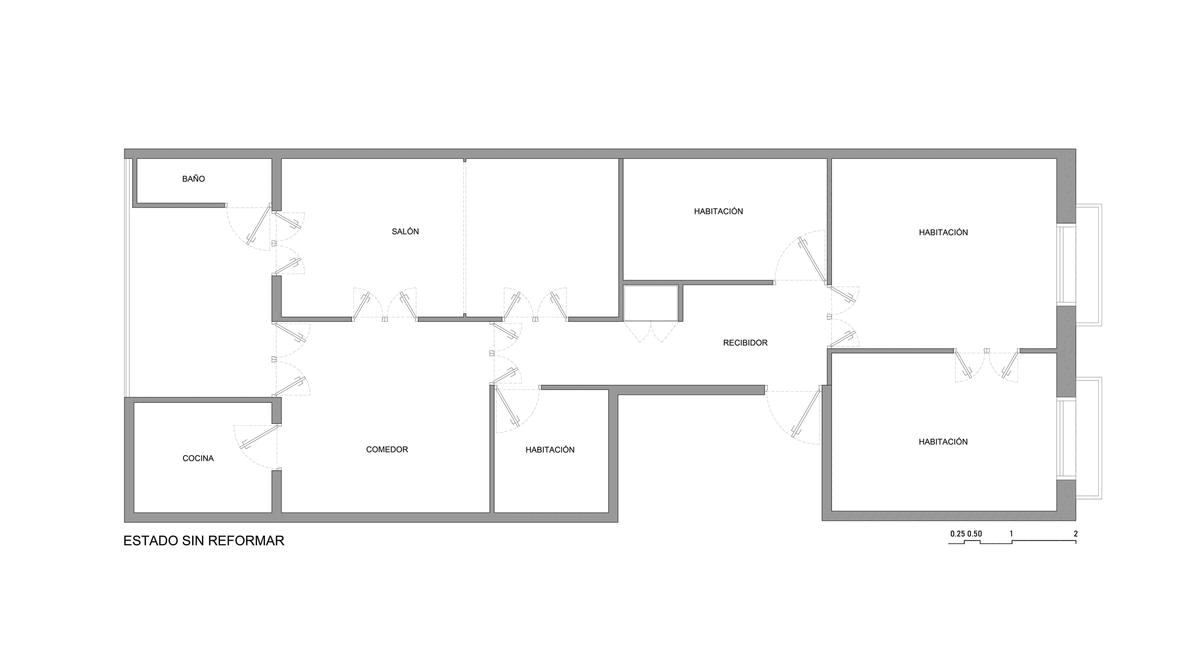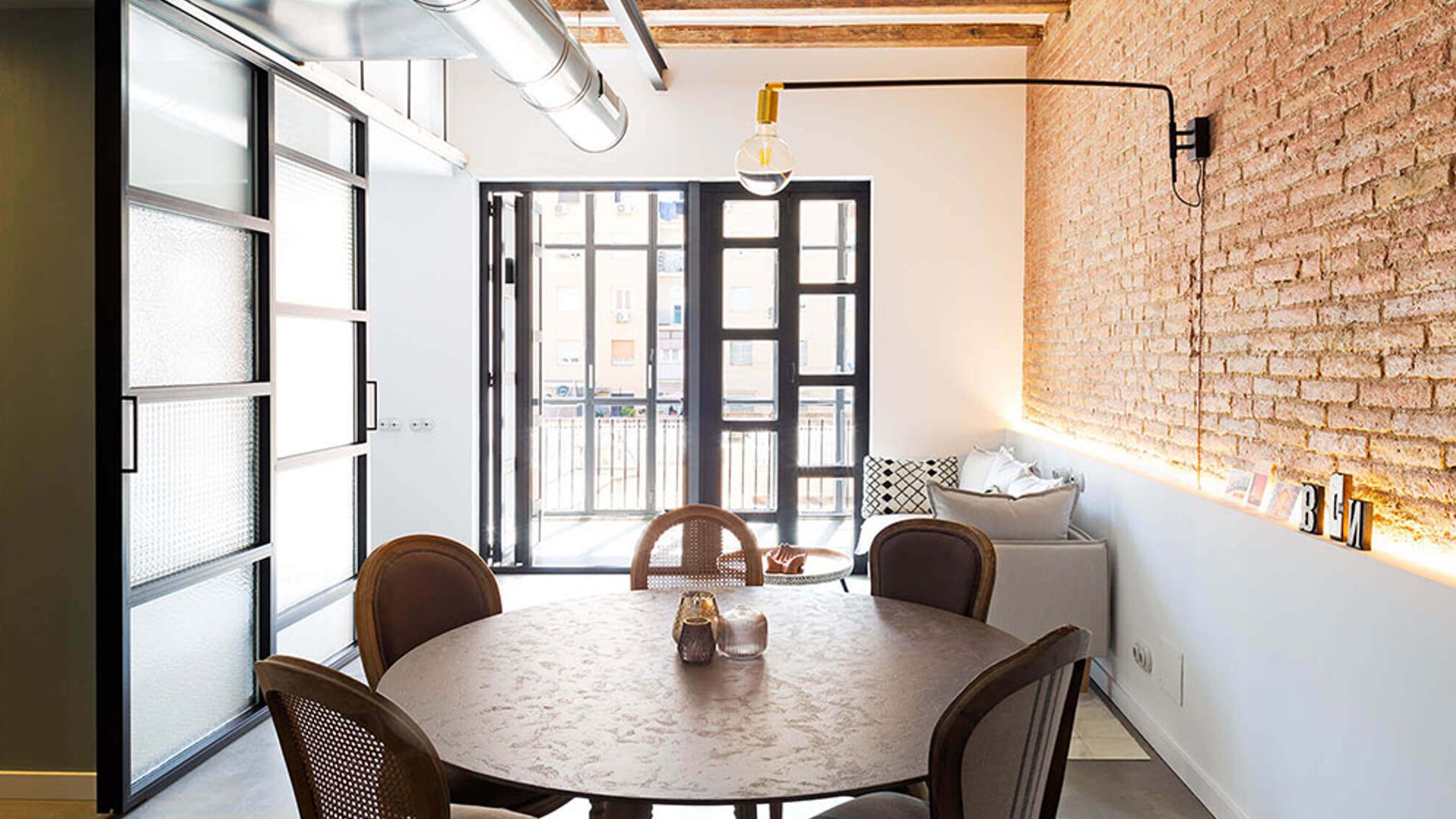
EME 1
“EME1” is located in the Eixample district of Barcelona, in a typical late 19th-century building with a narrow span (6 meters), high ceilings (3.40m), and an outdated layout.
The owners, a German-Spanish couple with three children who would use the apartment seasonally, were accustomed to living in spacious, open areas. This posed a challenge in planning a functional layout to reconcile the physical limitations of the inherited apartment (80 m²) with a broad program: day zone + 3 bedrooms + 2 bathrooms, all while maintaining the fluidity and spaciousness in line with the owners’ personality, without sacrificing functionality or the required privacy.
To achieve this, minimalist solutions were employed, such as the open-plan concept to unify spaces with complementary functions, the dominance of straight lines and pure forms, the visual permeability of the partitions, and the use of light colors.
Two well-exploited circumstances enhanced the spatial feeling: the apartment’s height, preserved at its maximum in most rooms, and an old open gallery, which with two pairs of folding doors, could either be incorporated into the interior space or transform the entire apartment into an outdoor space, or alternatively, turn the gallery into a greenhouse on sunny afternoons.
The location of the kitchen proved crucial in articulating the rest of the spaces. Positioned centrally within the apartment, it acts as a pivot between the day zone and night zone. The kitchen was resolved with column-like furniture that rotates and also solves the entrance hall wardrobe and hides the installations.
The entire social life of the apartment unfolds towards the inner courtyard, creating an “open space” with the kitchen. To make this happen, we had to demolish the longitudinal wall that spanned the entire length of the apartment, which required structural reinforcements. A network of iron beams now crosses the main space without fragmenting it, replacing the old dividing wall.
The two other rooms adjacent to this open space (the bathroom and study room) are delimited by a large sliding door made of steel and glass, which can be opened or closed as needed. Instead of an opaque door, we found it more interesting to propose a transparent one to enhance the visual fluidity. By choosing glass with varying finishes and transparency levels, we provided versatility to this partition and expanded the privacy options.
Regarding the requested program, the owners believed it was necessary to have two bathrooms to serve the large family. The strategy of compartmentalizing the bathroom into three independent spaces allowed us to forgo one of the bathrooms. By separating the wash basin, toilet, and shower areas, the bathroom could be used simultaneously by three people without occupying more square meters, which were then utilized for other functions.
For the finishes, we designed a material combination in line with the original spirit of the existing elements. Guided by the “industrial air” desired by the owners, exposed brick walls were kept, and the HVAC system (air conditioning and heating) was designed to remain visible, playing with the structure of the original wooden beams and additional iron reinforcement beams.
Given the heterogeneous materials present, we used three elements that serve as a chromatic and thematic thread to unify the spaces:
- Wood-cement boards in a gray color, which, due to their water-resistant properties, were applied throughout the flooring, including the bathroom.
- Black steel, present in the structural reinforcements and the new, wide windows throughout the apartment, responding to the various circulation, functionality, and transparency needs.
- Green color applied to the old wood carpentry, small-format tiles, and the bathroom walls, conceived as a green box that, without a closure element, stands apart from the “open space” due to its chromatic contrast and lower height.
The various steel elements form a continuous thread that resolves the partitions, reinforces the structure, zones the large height, and highlights the contrast between the original elements and the ones introduced during the renovation.
“EME1” is based on a demanding structural intervention that updates an outdated layout while incorporating contemporary resources into a home that once again lives, with an industrial flair, fluidity, flexibility, and a contemporary style.
Ubicación: Eixample, Barcelona
Reforma: Reforma integral de vivienda con afectación estructura
Año: 2019
Superficie: 80m2
Fotografía: Valentín Hincû
